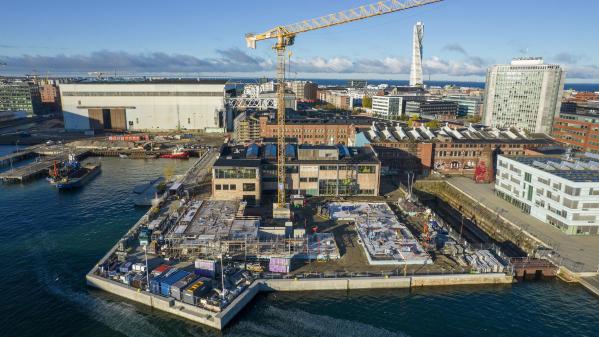A tour showcasing restored buildings and forward looking urban development in two different districts that both reflect Malmö’s industrial history.
The district called Varvstaden is situated in Malmö’s harbour area. Here Malmö’s century-old shipyard history is prominent, while the ongoing transformation creates an exciting mix of modern urban development and culturally and historically charged environments. A place with plenty of exciting raw materials such as footbridges, crane tracks and pipe systems.
Step by step, the area is being transformed to create a vibrant neighbourhood with about 4,000 workplaces and 2,500 apartments. A one km long quay promenade along the shipyard basin, several parks, as well as three new bridges, are also being developed.
Many of the beautiful old brick buildings have been preserved and are, or will be, restored and filled with new activities. The buildings that cannot be preserved are dismantled and materials that can be reused are set aside in a designated material bank to be used for new building projects in the area. Dismantling instead of demolishing is one aspect of a larger sustainability strategy that will be presented during the tour.
The tour continues to Sorgenfri, southeast of central Malmö. The northern part of this area constitutes Malmö’s oldest industrial district. An important reason for establishing factories here was the transcontinental railroad, built in 1898. Some of the older industrial buildings are preserved as the area is being transformed into a sustainable residential and mixed-use area. A former bus garage, with arched halls, has been carefully restored and now houses the Malmö School of Art.
The central location, the diversity of businesses and stake holders and the area’s long history provide opportunities for exciting urban development processes. The tour will showcase some
recently added terraced houses that are the first of their kind in the area. They form an interesting example of when the municipalities have begun to create land allocations that are explicitly aimed at architects who take on client responsibility. In this case the architects themselves have secured both the financing and construction.
Guided by Malmö City Architect. Includes presentations by a couple of the architects involved in the projects to be seen on the tour. The tour and ends up at Form/Design Center in Malmö where the exhibition PLAY FOR DEMOCRACY is featured.
Content:
• Transformation areas
• Restored industrial buildings and other circular solutions
• New and emerging public spaces
• Dense urban plan and mixed functions
• Projects developed “in-house” by architects themselves
